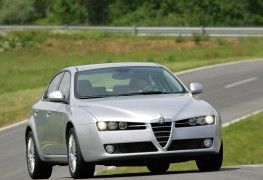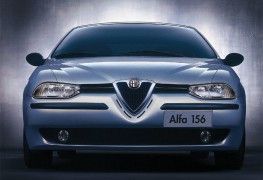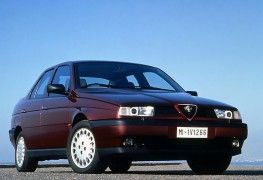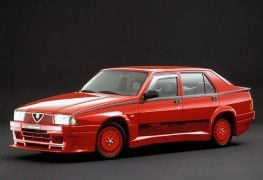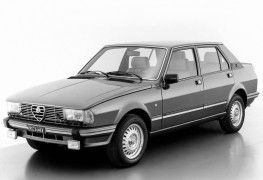Among its contributions to the four-wheel industry was the manufacture with stamped sheet steel and semi-automated processes. Their cars were both electric and with combustion engines with rotating cylinders.

Darracq 12HP
The success was almost immediate, and it was not long before he established subsidiaries outside France. In 1905 it would do so in the United Kingdom. In Spain, in 1907 (in Vitoria, the Sociedad Anonima Espanola de Automoviles Darracq), and, of course, the aforementioned SIAD in 1906. It also formalized an agreement with Adam Opel (sound familiar?) to manufacture its products for the German market.
SIAD was, in fact, a company where the capital was put between Darracq's English partners, Darracq himself and a number of Italian investors, with the aim of manufacturing under license the products of the French brand for the Italian market.
Although the company's headquarters were located in Naples, the factory was set up in Portello, not far from Milan. The problem is that the product launch turned out to be a failure, and by 1909 the Italian spin-off was in dire financial straits.
In the autumn of 1909, in order to safeguard the economic interests of the investors, the company's managing director, Cavalier Ugo Stella, proposed to create a new company from scratch, Anonima Lombarda Fabbrica Automobili, A.L.F.A. The idea was simple: the new company would keep the assets of the old one, while the old one would be liquidated to cover debts to creditors.
After welcoming the idea with open arms, the investors signed up to create the new company on 24 June 1910. At the same time, since Ugo Stella had started to think about the idea, Giuseppe Merosi, a technician who had been recruited from the FIAT ranks for the occasion, had been working on the new firm's first commercial product: the Alfa 24 HP.
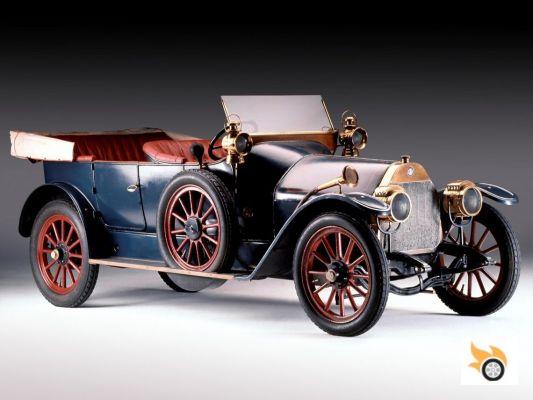
ALPHA 24 HP
The car was a commercial success when it went on sale, but the outbreak of the First World War cut short the company's development, as orders from the Italian government were cancelled. The company went bankrupt, and was taken over by the Banca Italiana di Sconto (BIS) for liquidation.
In parallel, Nicola Romeo had set up a company called Nicola Romeo & Co. with partial help from BIS. His factory was near Portello, and in 1915 he was commissioned to manufacture war material for the government. By 1918 the firm had grown enough so that Nicola Romeo himself decided to convert his company into an open stock company, thus forming the Società Anonima Italiana Nicola Romeo & Co. which would operate under the name Alfa Romeo.
A year later, with the armistice, Nicola Romeo decided to redirect the activities of his new company towards the automobile world, first taking parts from the extinct ALFA to market the 24 HP before starting to produce new models.
Nicola Romeo had also taken interests in the railway sector in 1918, where he had sent the engineer who created his first model, Giuseppe Merosi, to work.
Be that as it may, again bankruptcy began to lurk around Alfa Romeo. By 1920 Italy decided to devalue the lira, which complicated the firm's financial position. But it was the bankruptcy a year later of BIS that really complicated Alfa Romeo's existence.
The Italian government set up an entity, the National Credit Bank (BNC, Banca Nazionale di Credito) to try to save the situation, and took control of BIS. As BIS was a major shareholder of Alfa Romeo, indirectly the BNC took over Alfa Romeo.
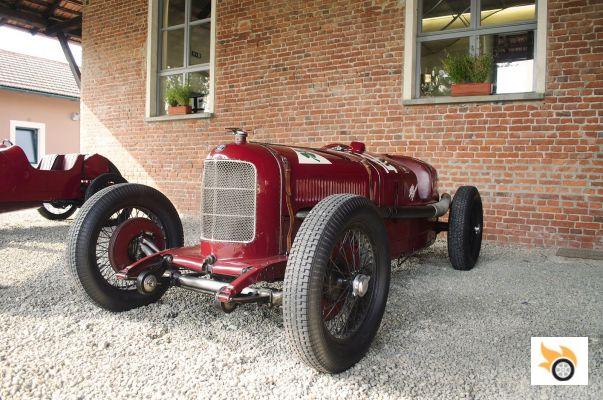
Alfa Romeo P2
By 1925 the company already had great sporting successes, with the P2 designed by Vittorio Jano winning the World Grand Prix Championship for Alfa Romeo, but the BNC at the same time had marginalized Nicola Romeo, who was not allowed to "rule". In the end, after many tug-of-war, the BNC reached an agreement to acquire Nicola's shares in the company and Nicola left the firm.
In spite of the commercial and sporting successes, Alfa Romeo grew beyond its possibilities, getting into the production of aircraft engines and industrial goods, which led it, once again, to bankruptcy. The paradox is that at that time it was the brand with the best reputation in the world automotive panorama, but they were unable to make money with it.
The state solution was to nationalize the company and put it under the direct control of the Institute for Industrial Reconstruction, with Ugo Gobbato as director. This happened in 1933. For two years Gobbato managed to transform and organize the company into a producer of cars, trucks and aircraft engines with good foundations to become profitable.
But World War II was approaching, and Mussolini's Italian regime needed industrial muscle to manufacture weapons. That's why Alfa Romeo was passed to military control in 1935. The factory would grow in employees until the end of the war (almost ten times more), and would increase its industrial muscle (the factory near Naples would be opened, which is where the Fiat Panda is now produced), while the strategic plan for after the war would be drawn up.
But Alfa Romeo would also suffer the effects of its participation in the war, being its factories bombed and several of its technicians killed, including the director Ugo Gobbato. Vittorio Jano left the company in 1937, fearful of the consequences of the war he saw coming, being replaced by Wifredo Ricard (yes, our Wifredo Ricart of Pegaso).
All these changes of management complicated the future of the company, which would have to reinvent itself under the direction of Pasquale Gallo. Gallo would devise the reconversion of the company from "luxury" products to a more generalist turn. By 1948 the company passed into the hands of Finmeccanica, the division of IRI dedicated to manage industrial companies.
Alfa Romeo was winning the first two Formula 1 world championships in the meantime, with "pre-war" technology, but it was clear that beyond its sporting and media successes, what it needed was to produce cars in volume.
It was with this mission that Giuseppe Luraghi arrived to direct the destiny of the company. This is how Alfa Romeo's first great volume product, the 1900, was born. The 1900 was a product that, being a premium and sporty saloon, had a price aimed at the middle classes, and not only at the rich. It was about, so that you understand me, turning a company that was in the style of what today would be Maserati, into a firm of the profile that Alfa Romeo now wants to recover.
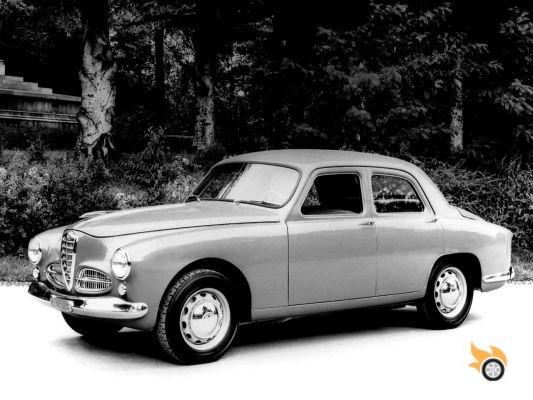
Alfa Romeo 1900
After the success of the 1900, Alfa Romeo would continue to evolve within the logical products. First came the Giulietta, to complement the 1900 with a C-segment product. Then the Giulia, to succeed the 1900, while bigger and more expensive products were launched (2000, 2600...). There were even plans for a B-segment, the Tipo 103, which was never produced.
To revive the economy of southern Italy, the government forced Alfa Romeo to use its Naples factory with a new project. The company invested in what, in a way, would be a successor to the unborn Tipo 103 project: a small front-wheel drive compact, smaller than the Giulietta.
Technically very innovative, the new car, known as Alfasud, designed with Giugiaro's help, created a unique compact, with a boxer front engine, great handling and many previously unknown features. It predated the Golf (in fact Volkswagen asked Giugiaro to help create the Golf after seeing and fearing the Alfasud), but its sales suffered for many reasons at the same time.
The location of the factory and the "Neapolitan" situation did not help to create a product at the pace and quality required by the market. The production solutions resulted in cars that rusted easily and whose quality was not up to expectations. Added to this was the oil crisis.
The brand image began to be devalued. The Alfetta, the successor to the Giulia, began to receive bad reviews, infected by the Alfasud, although it was a much better resolved product, whose finishes were in line with its German rivals (mainly the BMW 5 Series E12 of the time and the 2002 Ti).
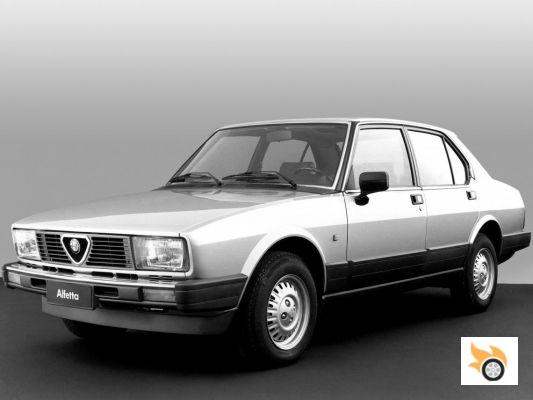
Alfetta
The crisis got rid of the firm's director, who was replaced by Ettore Massacesi in 1978, who led an internal reorganization to improve the firm's economic results, without really facing the internal problems of product quality and reliability. Alfa Romeo was making great and good cars technically and aesthetically, but customers were not getting a machine that lived up to their expectations in terms of quality and finish.
Massecesi's team tried to solve the problem of perceived quality with the ARNA, a joint project with Nissan that had to restore credibility to Italian reliability. But unfortunately the product turned out to be a fiasco. It had to be the successor of the Alfasud, but the ARNA failed aesthetically, not attracting the public, dynamically, not having an "interesting" driving (although the Alfa Romeo boxer engines kept their muscle), and the production quality kept the same faults of the Alfasud.
So the company reached 1986 in an unsolvable economic crisis. Finmeccanica could no longer bear such a heavy economic burden for the Italians, who after all, through their taxes, were financing Alfa Romeo's subsistence.
The company started to look for an owner for Alfa Romeo. The first move of Romano Prodi (yes, the one who became president of the European Commission) as director of the IRI was to talk to Fiat, obviously. Fiat was willing to partner with Alfa Romeo through a Joint Venture, but that did not unload IRI's accounts from Alfa's slab.
Prodi kept looking for interested parties, and Ford appeared, willing to buy a percentage of the company on the spot, and gradually increase its participation. What Ford did not guarantee to the Italian government was to keep the jobs at that time, nor the factories, nor even to guarantee that Alfa Romeo cars would continue to be manufactured exclusively in Italy.
Aware of the situation, Fiat decided to modify its offer, and bet on buying the whole company. Prodi, fearful of Ford's offer, decided to sell the company to Fiat, which created a fundamental problem. The Turin-based company had already acquired Lancia some time before, and you didn't have to be an expert to see how the two brands could step on each other's toes in the "Italian premium" market.
The acquisition of Alfa Romeo by Fiat took place in 1987, creating a company, Alfa-Lancia Industriale SpA, to manage the two premium brands. In 1991, in order to simplify the structure, Fiat would take direct control of the brands, dissolving the company.
Problems followed one after the other from 1987 onwards. Alfa Romeo arrived with a product range with profitability and reliability problems. As had happened with Lancia, Fiat's idea was the one that is now so applauded by VAG: to create modular platforms that would be shared between all the models of the brands, giving each of them a different character and spirit to their products. Does this sound familiar to you from Audi with its A3 and the Volkswagen Golf? Well, the Italians were already doing it before the nineties.
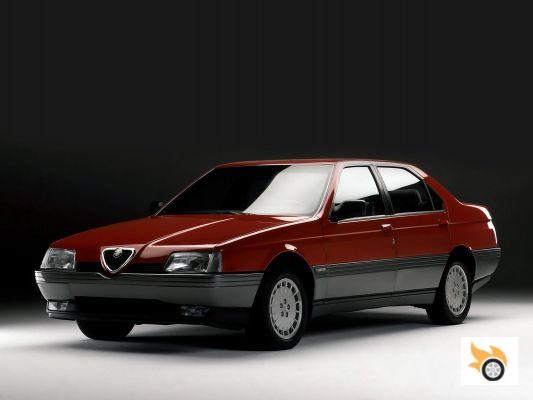
Alfa Romeo 164
The problem is that Fiat miscalculated the extent to which common elements could be used without diluting the image of the product. The first product launched under Fiat's command was the front-wheel drive 164. Alfa had a project already developed for the successor to the Alfa 6, with a lot of technology inherited from previous models, such as the 75, with rear-wheel drive and transaxle gearbox.
But Fiat wanted to use its concept of common platforms. So the 164 was incorporated into the platform used in the Lancia Thema, Fiat Croma and Saab 9000. Although Pininfarina was hired to design it and was given "absolute freedom" to create "a four-door Ferrari", and the car sold relatively well by volume, the brand's most loyal fans already saw that Alfa Romeo's future was losing its origin because of the type of chassis used and the shared elements.
The launch of the 155 only corroborated the fears of the Alfa fans, abandoning the rear-wheel drive of the 75 and its radical mechanical layout, to use Fiat's Tipo 2 platform, the one used in the Tipo and the Lancia Dedra. Everything that came after that were still products "with a certain Alfa Romeo flavour", but without the necessary investment to give them a personality of their own.
The brand gradually lost prestige as a premium on the market. If in the late seventies or early eighties the market positioning of the 75 was the same as that of an equivalent BMW (a 3 Series), when the 156 was launched on the market it was already playing between two waters, being a D-segment saloon "too expensive to be generalist, but too generalist to be premium".
The problem of not being able to sell at BMW prices also vitiated the situation: less income meant less possibility of investing in specific elements for the cars. Add to that the delicate situation of Fiat after the divorce from General Motors, which led to cuts in investment, and we have the situation we have experienced, with products that, as Sergio Marchionne has not tired of repeating, "did not comply with the legacy of Alfa Romeo".
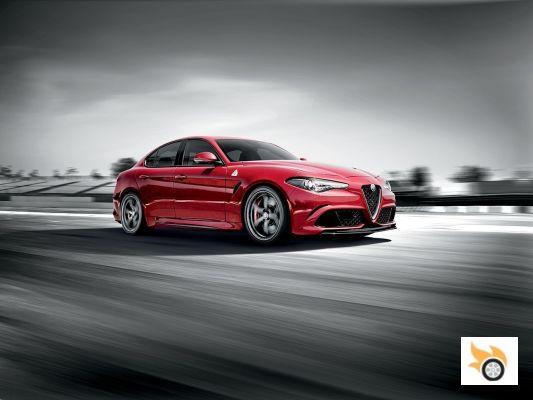
And this is not to say that they made good products. Anyone who has driven a 147 GTA or a 156 knows that they were good fun cars. But they didn't meet all the necessary maxims to be worthy heirs to the 1900, Alfetta, Giulia or 75.
Time will tell if Alfa Romeo's history in the future, with FCA's bid to re-brand it as a premium sports car and return it to its natural market space of the 1950-1980s pays off. The Giulia is the first step towards this.
The return of Alfa Romeo: from the 1900 to the Giulia